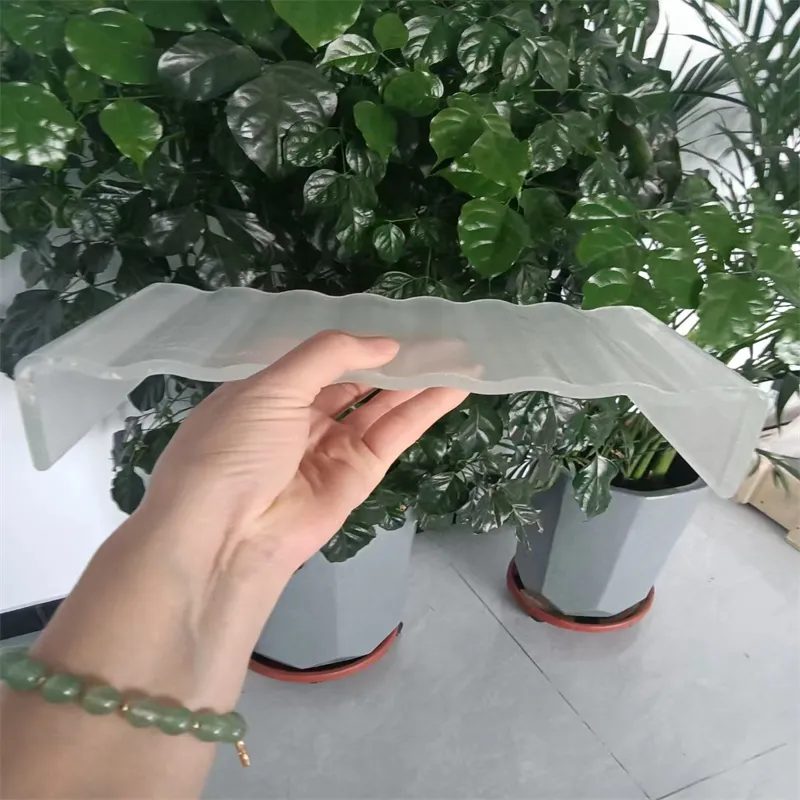Dec . 28, 2024 17:17 Back to list
Comparing Laminated Glass and Tempered Glass for Optimal Safety and Design
Understanding Laminated Glass and Tempered Glass
In the world of modern architecture and design, the use of glass has evolved to meet both aesthetic and functional requirements. Among the various glass types available, laminated glass and tempered glass stand out due to their unique properties and applications. Understanding the differences and advantages of these two types of glass is essential for making informed choices in construction and design.
What is Laminated Glass?
Laminated glass is a type of safety glass that consists of two or more layers of glass bonded together with an interlayer, usually made of polyvinyl butyral (PVB). This interlayer not only holds the glass layers together but also provides significant benefits. When shattered, laminated glass tends to break into smaller, less dangerous pieces rather than shattering into sharp fragments, reducing the risk of injury. This characteristic makes laminated glass an ideal choice for applications where safety is paramount, such as in windshields for vehicles and in buildings with large glass facades.
Moreover, laminated glass also offers excellent sound insulation. The interlayer effectively dampens sound waves, making it a favored choice for residential and commercial buildings located in noisy environments. Additionally, the interlayer can also block harmful ultraviolet (UV) rays, which helps protect interiors from fading and degradation due to sun exposure.
What is Tempered Glass?
Tempered glass, often referred to as toughened glass, undergoes a rigorous manufacturing process that involves heating the glass to high temperatures and then rapidly cooling it. This process increases its strength compared to regular glass and allows it to withstand higher levels of stress and impact. Because of its enhanced durability, tempered glass is commonly used in areas where safety and resistance to breakage are crucial, such as shower doors, glass doors, and facades.
laminated glass tempered glass

When tempered glass does break, it shatters into small, blunt pieces that are less likely to cause injury, which is a key safety feature. However, unlike laminated glass, tempered glass does not hold together when broken, which means it can create more extensive openings, posing potential risks in certain situations.
Applications and Uses
Both laminated and tempered glass have their specific applications based on their unique properties. Laminated glass is often used in buildings that require superior safety features, such as schools, museums, and high-rise structures. Its ability to block UV rays also makes it suitable for objects that could be damaged by sunlight, such as artwork and furnishings.
On the other hand, tempered glass is frequently used in environments where high thermal stress is present, such as in kitchens or areas exposed to significant temperature changes. It is also commonly found in glass railings, balustrades, and shower enclosures where aesthetic appeal without compromising safety is desired.
Conclusion
In conclusion, both laminated glass and tempered glass play crucial roles in modern architecture and design, each offering distinct advantages suited for specific needs. While laminated glass excels in safety and sound insulation, tempered glass is favored for its strength and ability to withstand thermal shock. Understanding these two types of glass can help architects, builders, and consumers make informed decisions that enhance both safety and aesthetics in their projects. As glass technology continues to evolve, these materials will undoubtedly play an even more significant role in our built environment.
-
Safety and Style with Premium Laminated Glass Solutions
NewsJun.24,2025
-
Reinvents Security with Premium Wired Glass
NewsJun.24,2025
-
Premium Float Glass Line for Modern Architecture
NewsJun.24,2025
-
Low Emissivity Glass for Energy-Efficient Architecture
NewsJun.24,2025
-
High-Performance Insulated Glass Solutions for Modern Architecture
NewsJun.24,2025
-
Elevates Interior Style with Premium Silver Mirror
NewsJun.24,2025
Related PRODUCTS














